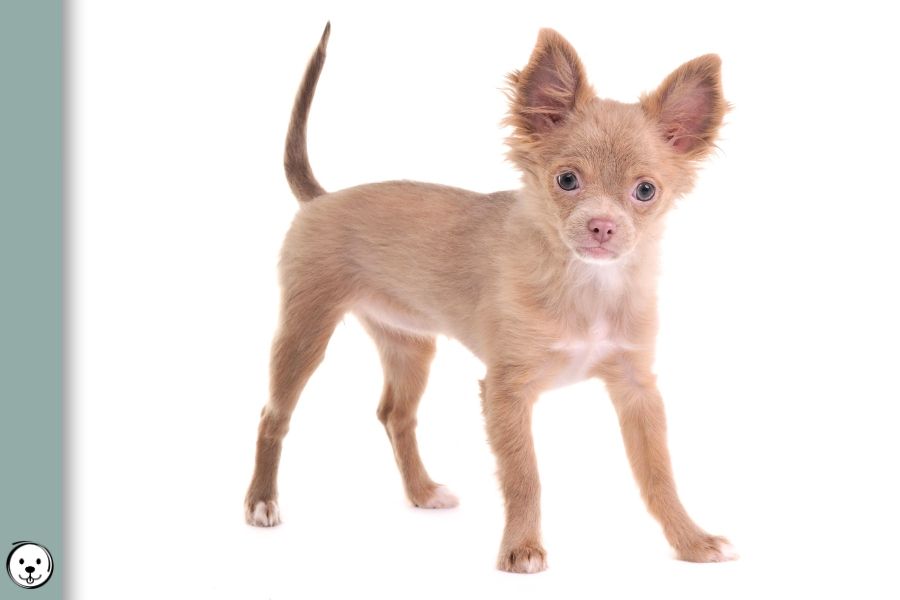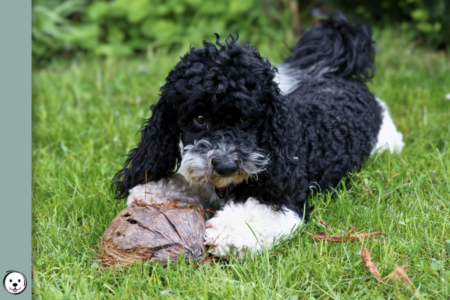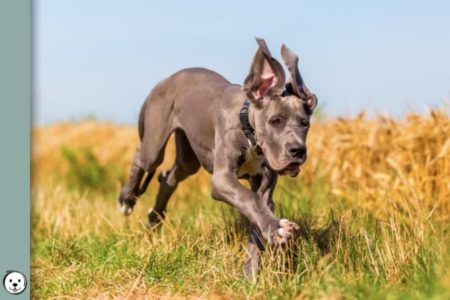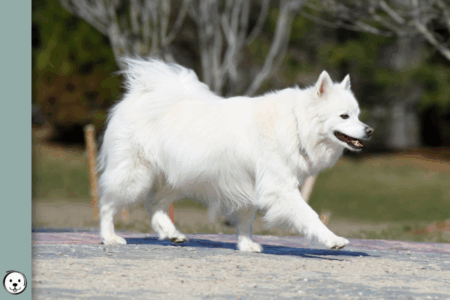Lilac sable dogs have a sable pattern with diluted brown eumelanin. They have a phaeomelanic yellow to red base color with some amount of lilac-tipped hairs on their upper body.
Sable Colors
Dogs need to be able to express their sable allele (we shortened the new allele names ASIPDY and ASIPSY to Ay). They have to be ky/ky combined with either a mask Em/- or a wild type allele E/-.
The color of their eumelanin sabling is determined by the B locus and D locus.
The color of their phaeomelanin is determined by red intensity.
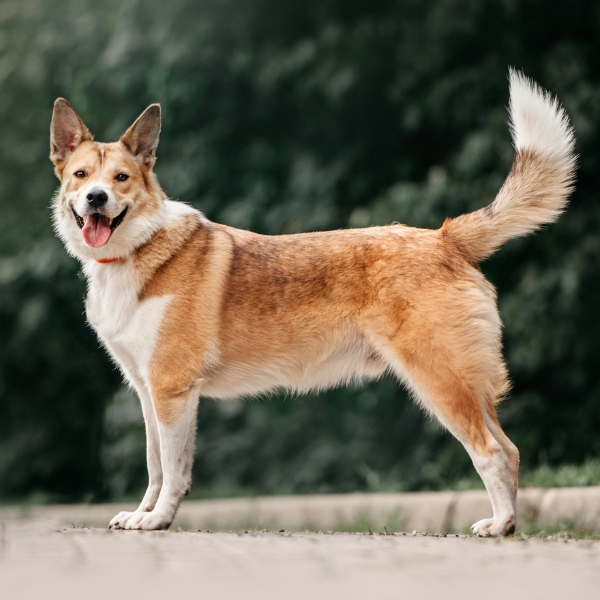
Em/- or E/- ky/ky Ay/- B/- D/-
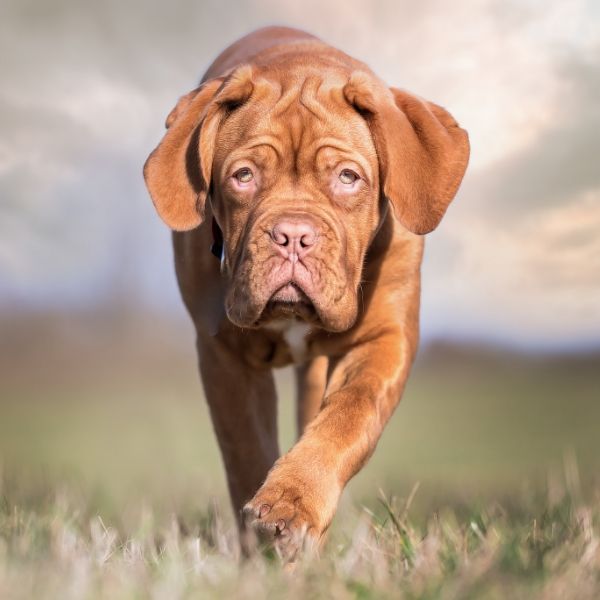
Em/- or E/- ky/ky Ay/- b/b D/-
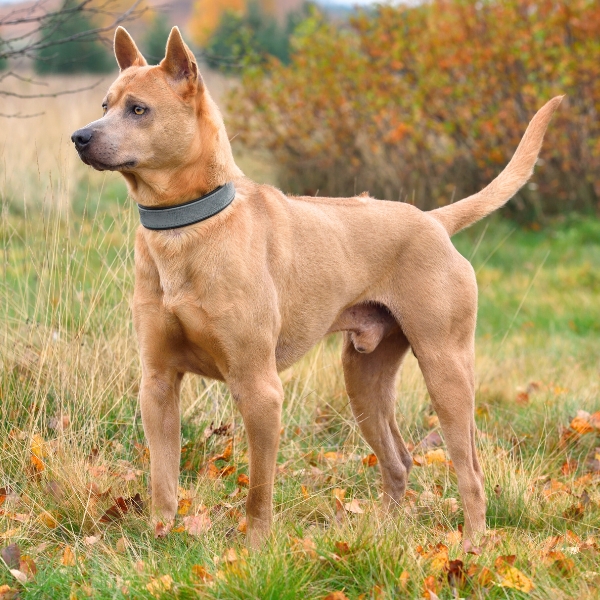
Em/- or E/- ky/ky Ay/- B/- d/d
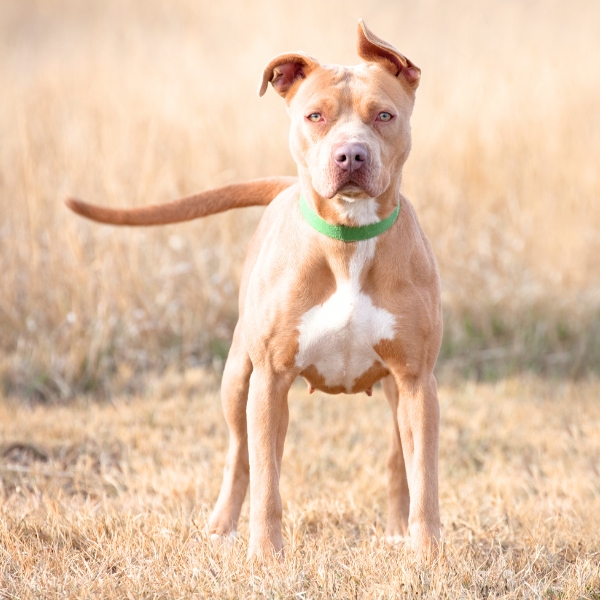
Em/- or E/- ky/ky Ay/- b/b d/d
Lilac-Based Sable Pattern
Dogs with a lilac sable pattern will have a predominantly phaeomelanic coat with varying amounts of lilac-tipped hairs on top, causing anything from little to heavy lilac shading.
The sable pattern is found at the A locus. It is responsible for color placement.
It tells pigment cells where to make phaeomelanin and where to make eumelanin.
If you don’t know what that is, read more about pigment types.
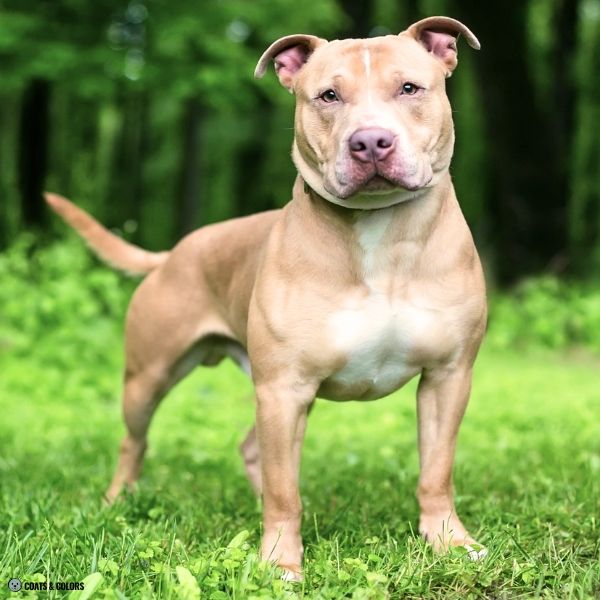
Dogs with any kind of lilac-based pattern have diluted brown eumelanin (b/b d/d).
They have two sets of homozygous recessive alleles: The b/b at the B locus turns their eumelanin from black to brown. And the d/d at the D locus then dilutes the brown pigment to lilac.
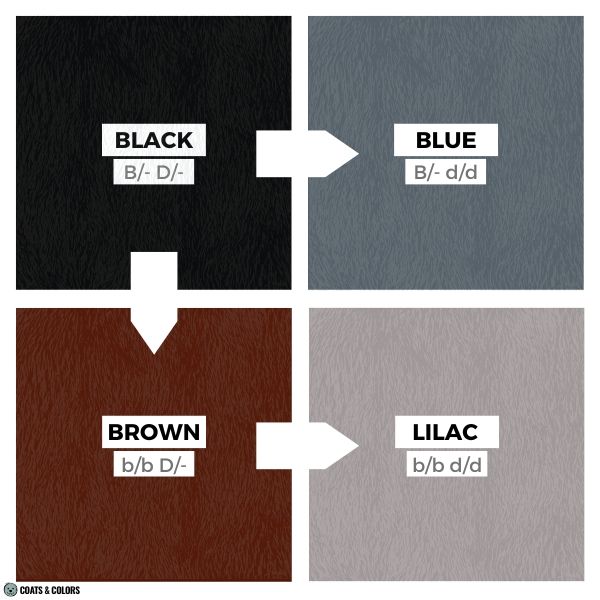
Diluted brown can be so dark it looks almost brown or it can be a very light beige or taupe color.
The lilac eumelanin also affects the nose color, whiskers, eye rims, lips, nails, paw pads, or skin pigment which will all be a light brown or taupe color (if these areas are pigmented).
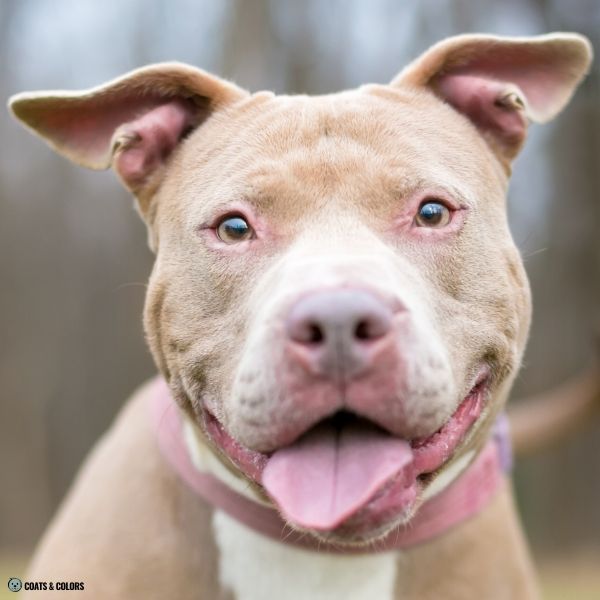
Phaeomelanin intensity in lilac sables can vary from pale cream to a more intense reddish color.
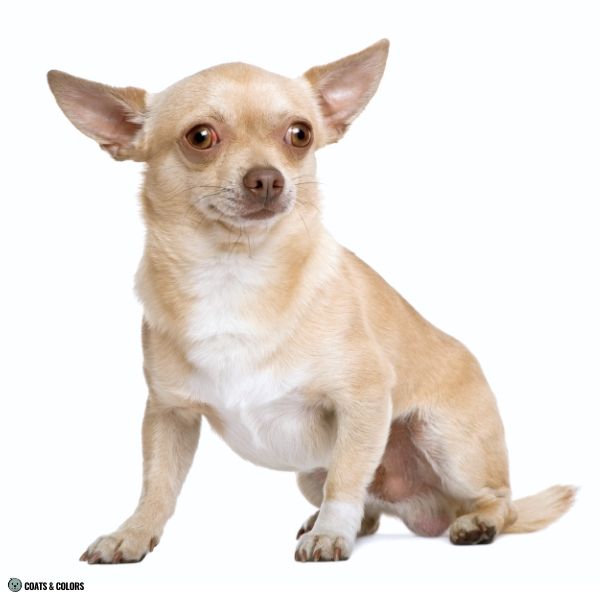
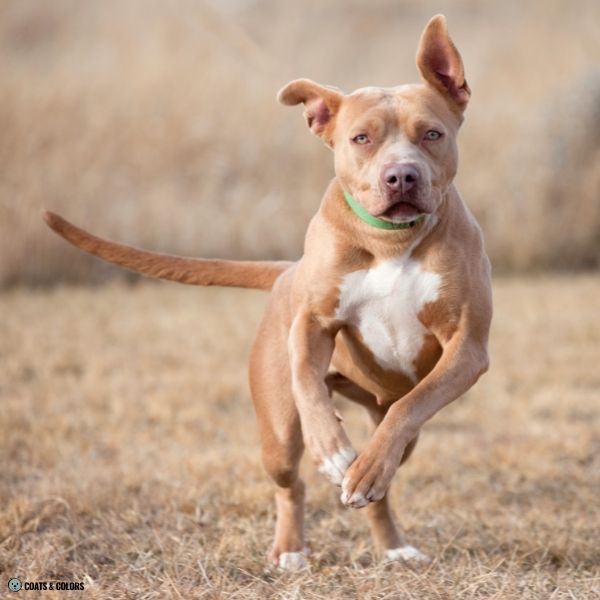
Lilac sabling causes light brownish hues on top of the red sable base color.
Lilac sable shading is mostly concentrated along the dog’s topline.
Heavier dark lilac shading can give darker ear fringes, it can form a half-collar around the neck, or it can give a widow’s peak on the dog’s forehead. However, the lilac hair tips will often be barely noticeable against the red base color. Lilac sabling is often perceived as a metallic overlay.

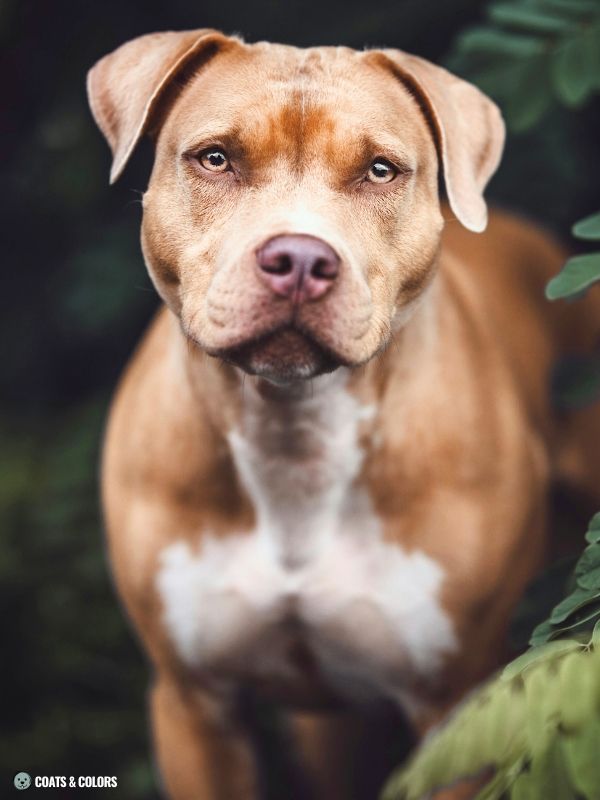
The placement of lilac-tipped hairs can be hard to see against a red coat. Typically, sable does not give lilac face markings below a widow’s peak. And it should not produce any dark shading down the legs.
Dogs with visible lilac on their muzzle or chest might have a lilac mask. And lilac legs and paws might in some cases indicate that the dog is in fact solid lilac or maybe lilac seal.
Lilac-Based Sable Puppy Coat
Young sable puppies are typically born with some lilac shading in their coat.
The lilac color can vary from silvery to chocolate tones. A lilac sable puppy often has slightly warmer tones in its coat compared to a solid lilac puppy, due to the presence of phaeomelanin.
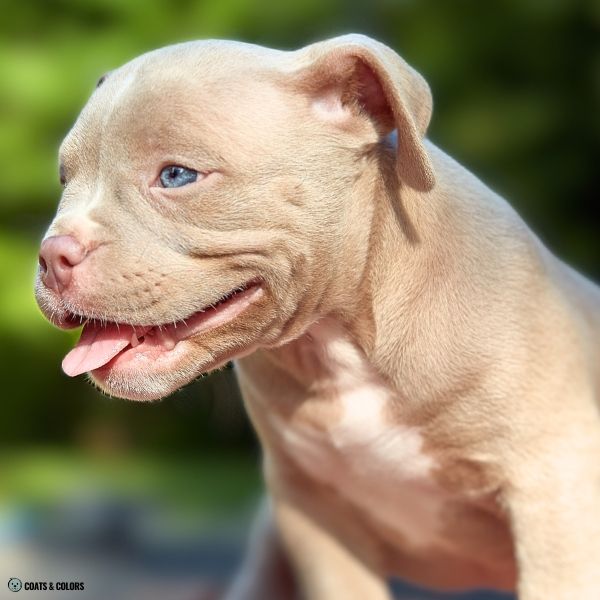
It can take some time for all the lilac overlay to clear.
So it’s very normal to see some residual face or leg shading in young lilac fawn dogs.
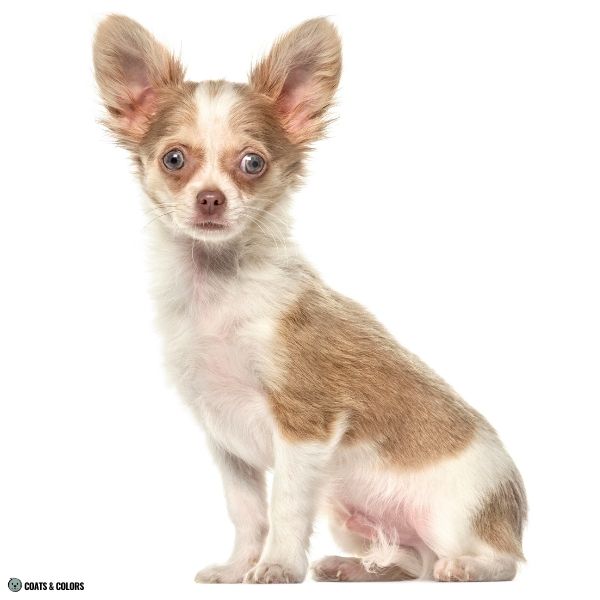

Some lilac sabling may or may not return in their adult coat.
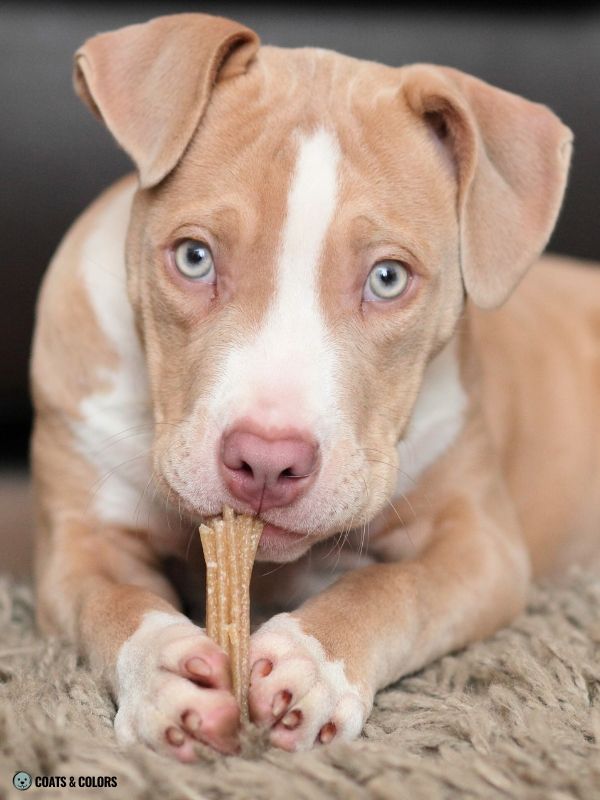
Breed Terms
Lilac sable is recognized as a standard color in only very few dog breeds[2,3].
However, patterns with lilac pigment are also sought after in color breeding.

Lilac combined with sable can happen in very different breeds such as Italian Greyhounds, American Bullies, Border Collies, or Chihuahuas. Many of these breeds simply call it something like “lilac fawn“.
In Pomeranians, a non-standard lilac-based sable dog is called something like beaver or beaver sable.
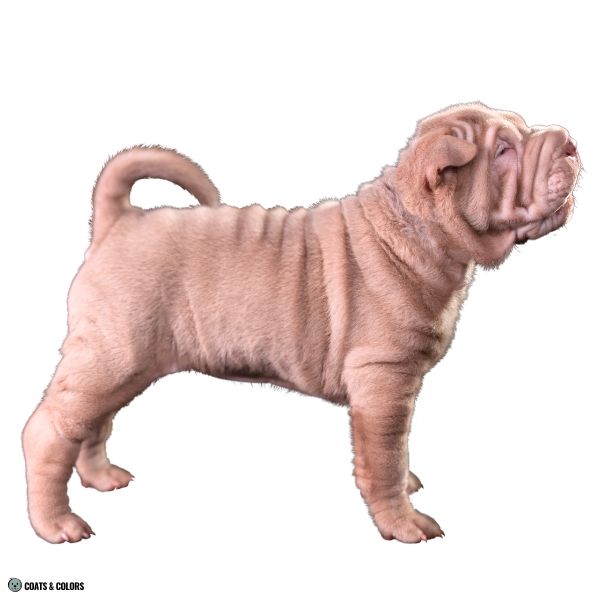
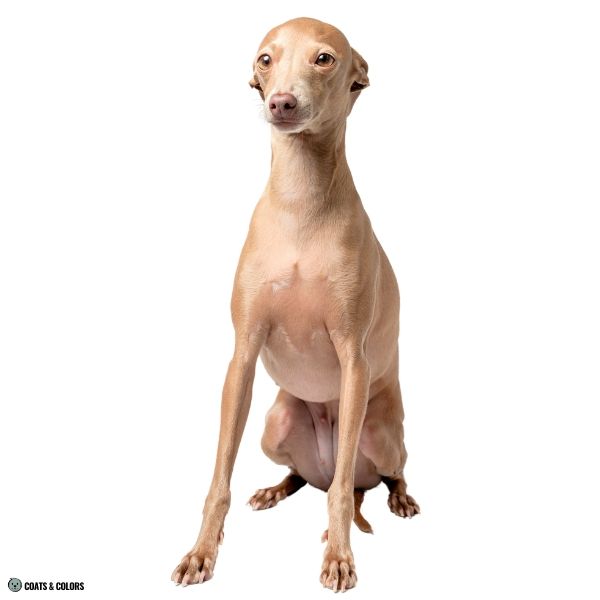
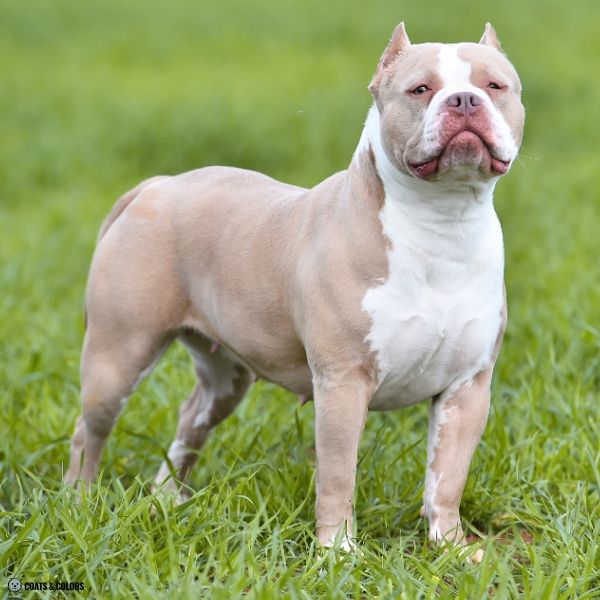
When French Bulldog breeders talk about “lilac fawn“, they actually mean “diluted cocoa fawn“. Cocoa (co/co) is a Frenchie-specific trait that causes a grayish brown color in absence of b/b. And “lilac” is a Frenchie breed term for its diluted version. They call their true lilacs (b/b d/d) “isabella“.
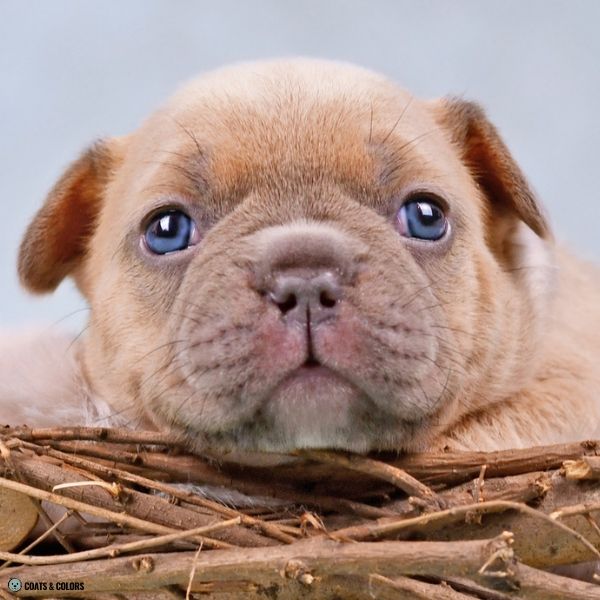
Lilac-Based Sable Variations
Some other traits can affect how a lilac sable pattern will look like.
- Lilac sable dogs can have any coat type and texture.
- Some countershading can lighten the phaeomelanin base color on the underbody.
- White spotting can cover some or most of the lilac sable pattern.

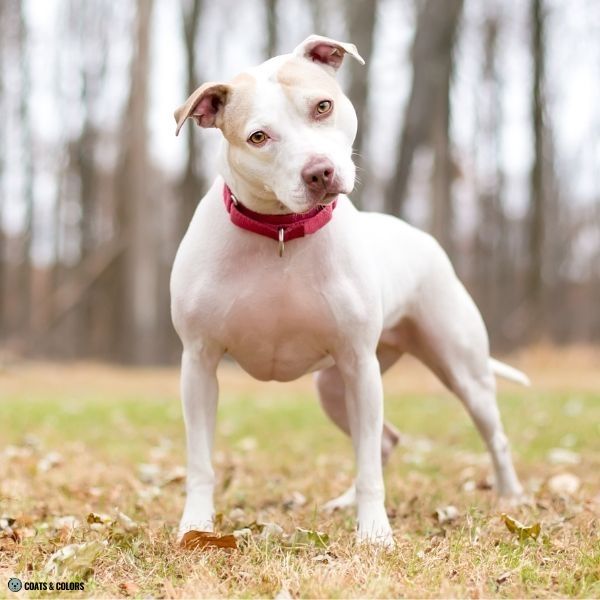
- Lilac sable dogs with an Em variant can have a lilac mask which can be hard to see.
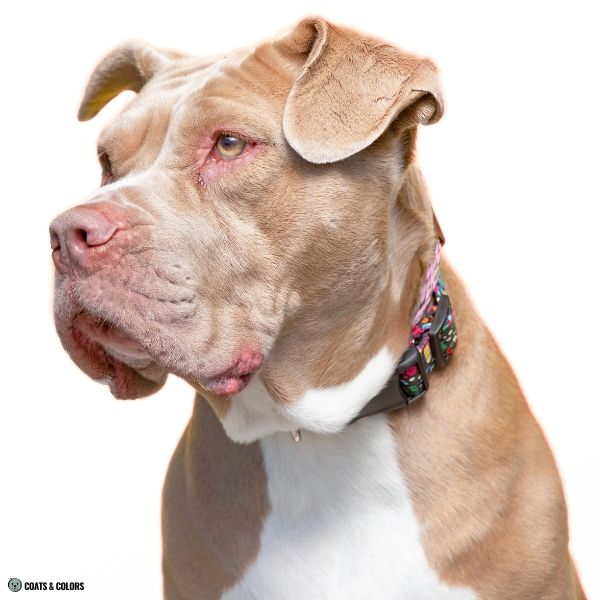
- Brindle on a lilac sable dog will cause lilac stripes on top of their sable pattern.
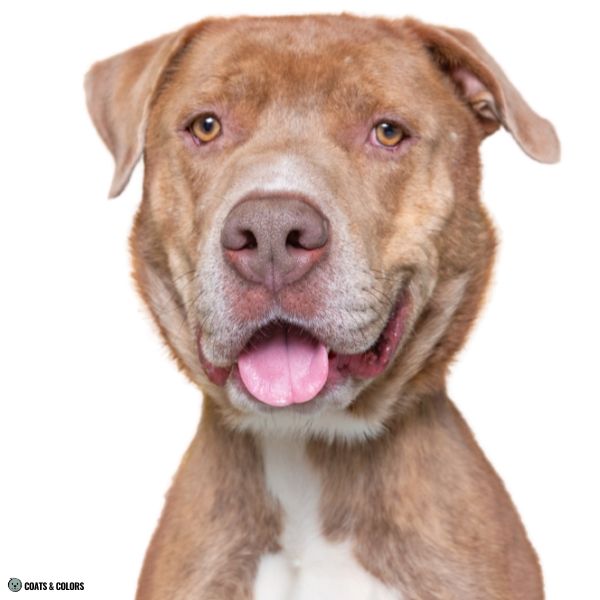
- Some dogs are lilac-based sable merle. However, dogs need some eumelanin to express a visible merle phenotype. On a lilac-based clear sable pattern, merle patterns might be hidden!
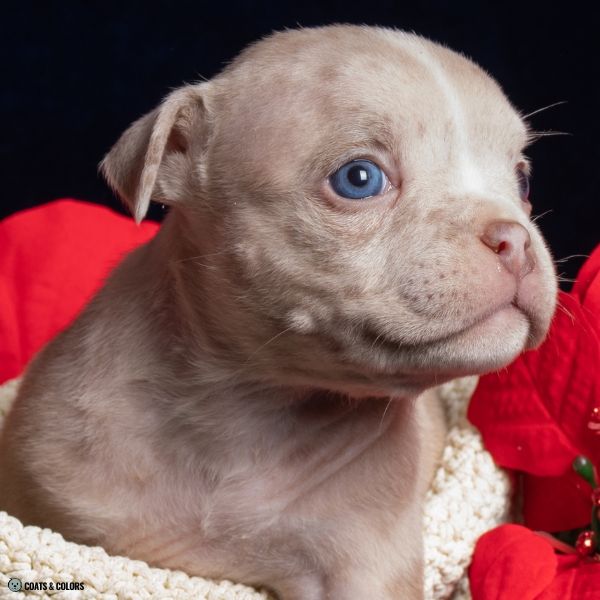
- Progressive graying can cause eumelanin fading in furnished dogs. This lightens the lilac hair tips in a sable pattern further to a pale beige color, making them even less visible.
- Domino traits such as ancient domino can remove all of the lilac overlay from a sable pattern. It gives white whiskers and may also lighten the phaeomelanin or give a lighter undercoat.
- The seal trait can cause a “ghost sable” pattern on dominant solid dog. It makes the solid lilac a little transparent so the hidden sable pattern can bleed through and cause pale reddish markings.
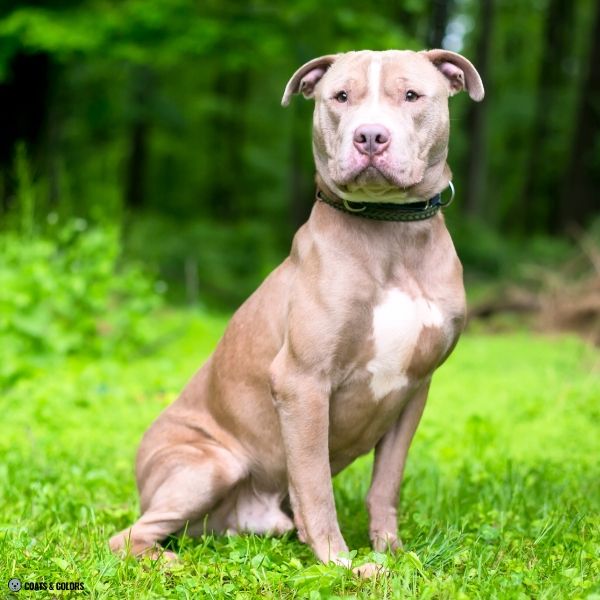
Sable Lookalikes
If you’re new to coat color genetics, you may have a hard time seeing the difference between a sable and an agouti pattern. And lilac-based patterns don’t make it easier.
- Next, creeping tan and many brown-based agouti domino as well as as some brown-based tan point domino patterns can give a widow’s peak with a mostly clear tan face.
- A furnished brown sable with pigment fading may look like he had lilac sabling. However, his brown nose pigment will not be affected and stay the same. These dogs are also born with normal brown eumelanin in their coat before the graying starts.
- Recessive red (e/e) can be hard to tell apart from clear sable. It does not help that recessive red dogs often have a pale nose that may look pale and brownish even in a black-based pattern. However, a sable dog typically has pigmented whiskers while a recessive red dog has not.
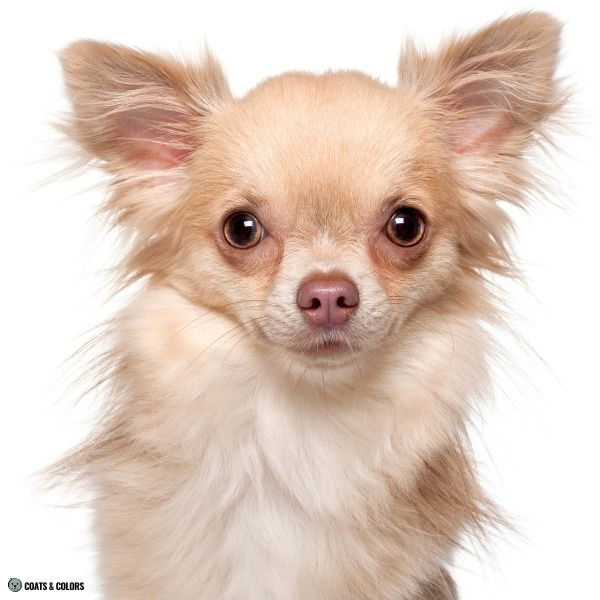
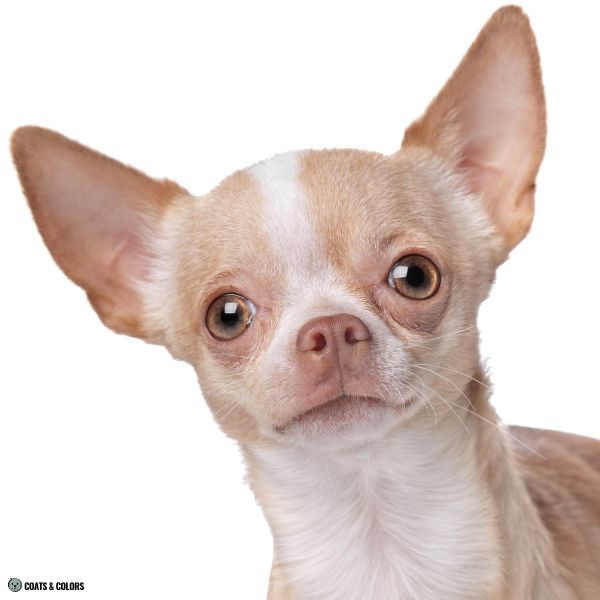
Lilac-Based Sable Genetics
Coat colors are determined by pigment distribution and pigment colors.
Pigment Distribution
The basic pigment distribution is determined by the A locus, K locus and E locus.
-
b/b
d/d-
Ay/--
ky/ky-
Em/--
lilac sable
mask
-
-
E/--
lilac sable
-
-
eG/-
eA/--
lilac sable
domino
-
-
-
-
A locus
First of all, dogs with a sable pattern have a sable variant (Ay) at their A locus.
K locus
Dogs who express a sable pattern always have two copies of the wild-type K locus (ky/ky). If they had even one copy of brindle (kbr/-), their sable pattern would have lilac stripes on top.
E locus
The E locus genotype also has to make normal pattern expression possible.
Lilac-based sable dogs can have a lilac mask (Em/-) or they can have a wild-type allele (E/-). Some dogs that might look like a clear lilac sable might actually be sable domino (eG/- or eA/-).
Pigment Colors
Black-based sable dogs have black eumelanin but they can have any shade of phaeomelanin.
Eumelanin
All of the eumelanin in a lilac sable pattern will be diluted brown (b/b d/d).
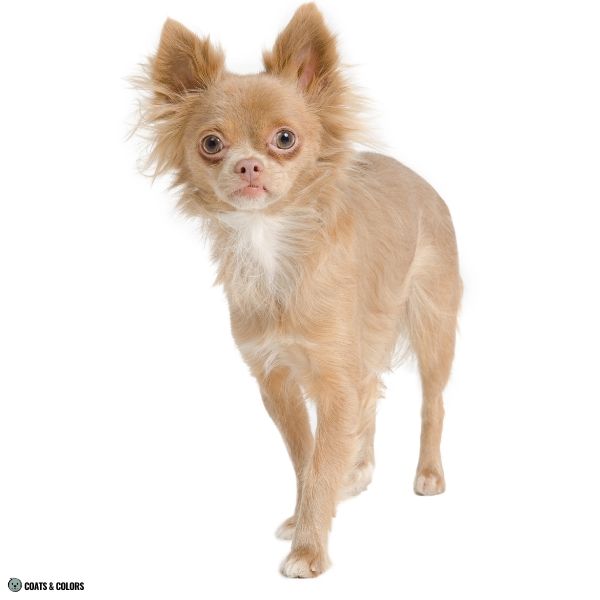
Intensity
The shade of phaeomelanin can vary depending on red intensity.
The Sable Allele(s)
Sable is derived from agouti by upregulated phaeomelanin production in all areas with banded coat. This causes the hair to start with a lilac hair tip followed by a long phaeomelanic root.
The gene variant responsible for a sable pattern is found at the A locus.
Legacy testing reports both clear and shaded sable as Ay.
Only new testing (UC Davis) distinguishes between two versions of sable.
ASIPDY > Ays
ASIPSY > aw
ASIPAG > asa
ASIPBS > at
ASIPBB > a
ASIPa
Dogs can test as clear sable (Ay = ASIPDY) or shaded sable (Ays = ASIPSY).
With modern testing, each A locus allele represents a haplotype with a hair cycle promoter (HCP) and a ventral promoter (VP). And the hair cycle promoter HCP1 is unique to the sable pattern.
This HCP1 promoter stimulates phaeomelanin synthesis in hair banding. This isn what turns the wild type banded hairs into hairs that oftentimes only have a lilac tip.
Learn More
Links
[1] Dreger et al. (2019). True Colors: Commercially-acquired morphological genotypes reveal hidden allele variation among dog breeds, informing both trait ancestry and breed potential. PLoS ONE 14(10): e0223995. https://doi.org/10.1371/journal.pone.0223995
[2] American Kennel Club (AKC): Dog Breeds Overview.
[3] Fédération Cynologique Internationale (FCI): Dog Breeds Overview.
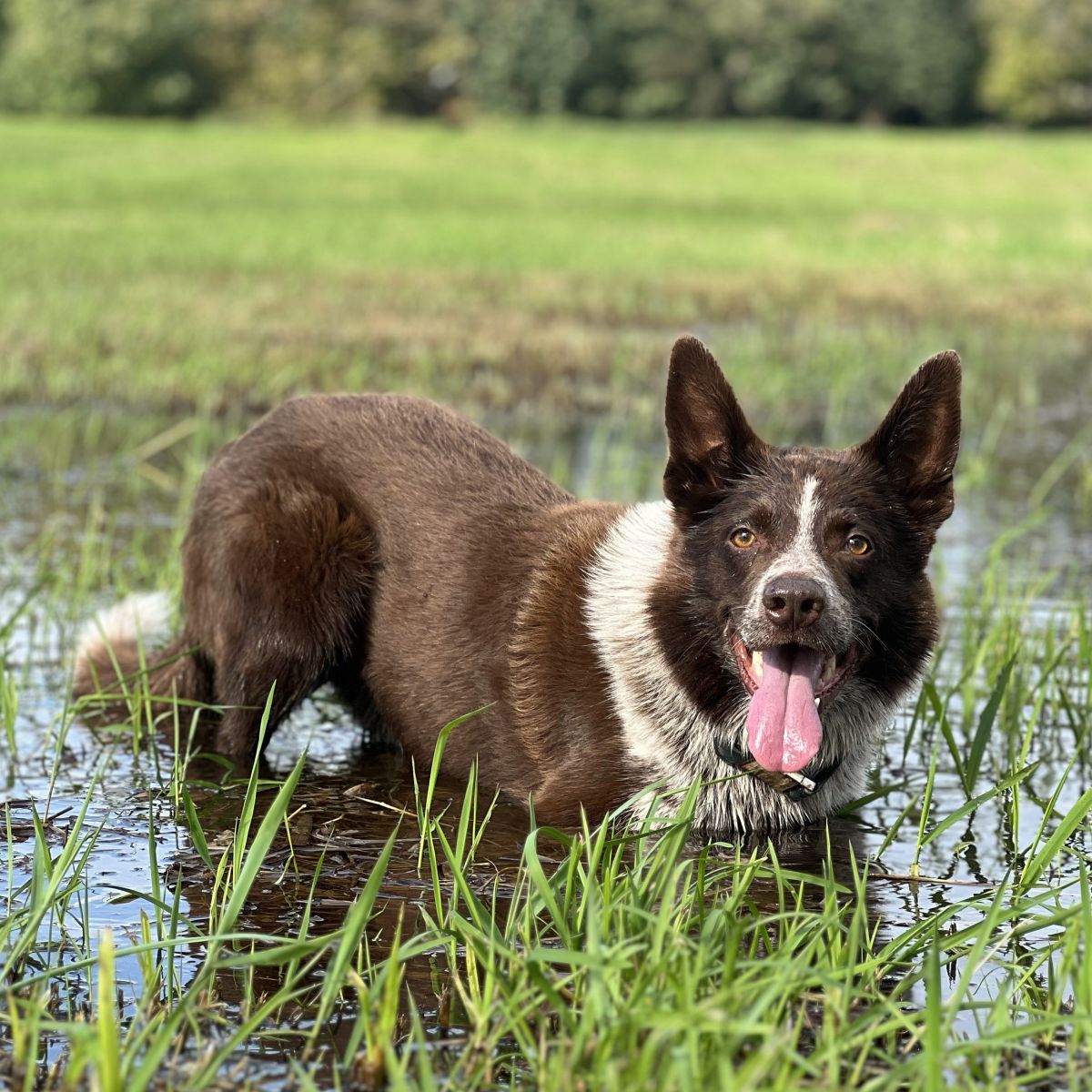
Hi! I’m Steffi. I am a biologist and a big time dog nerd. You are curious about coat color genetics? You’ve come to the right place! Read more.

